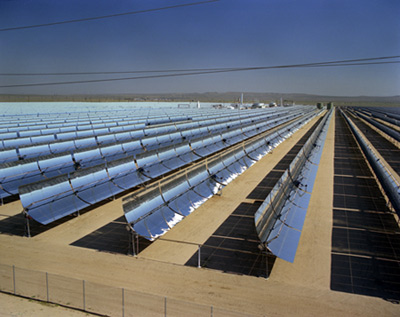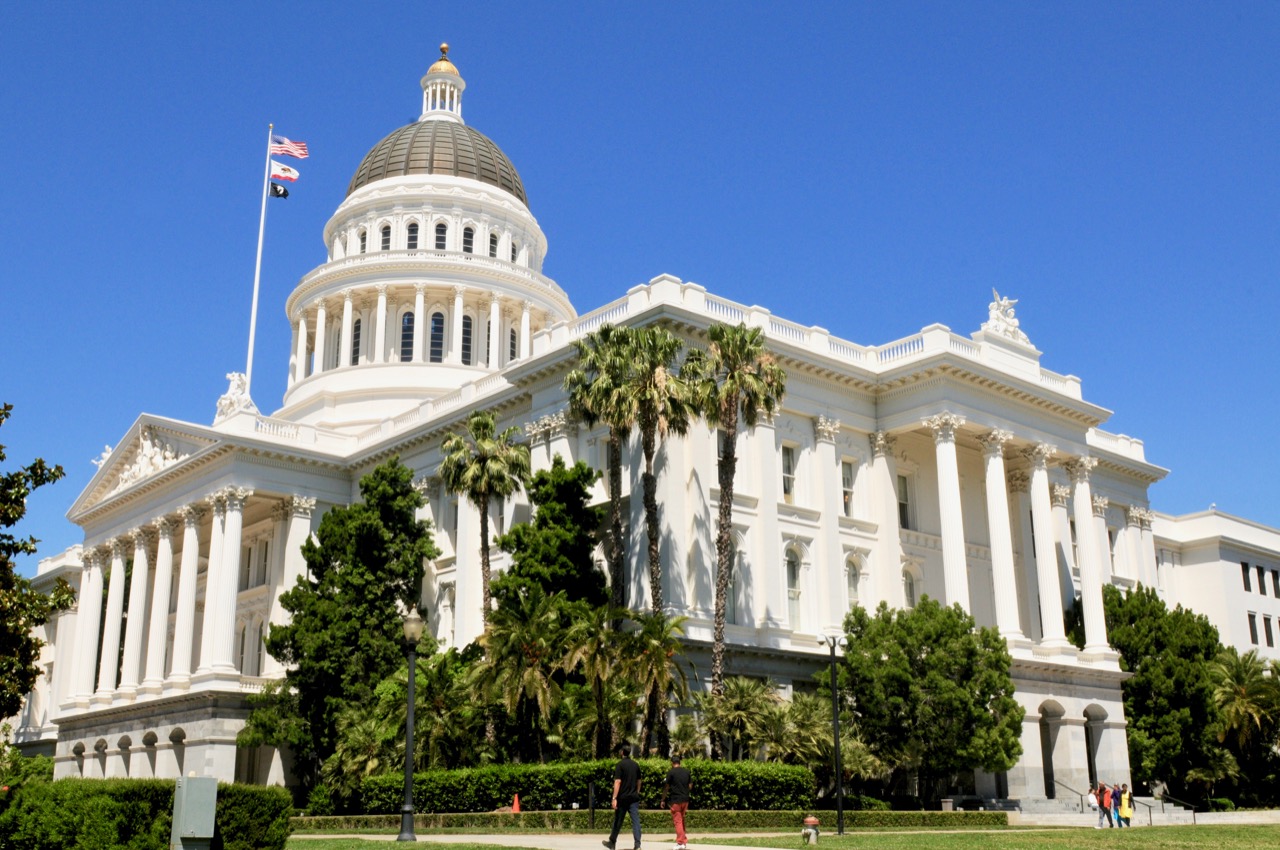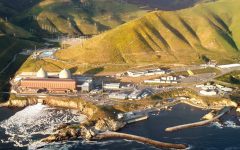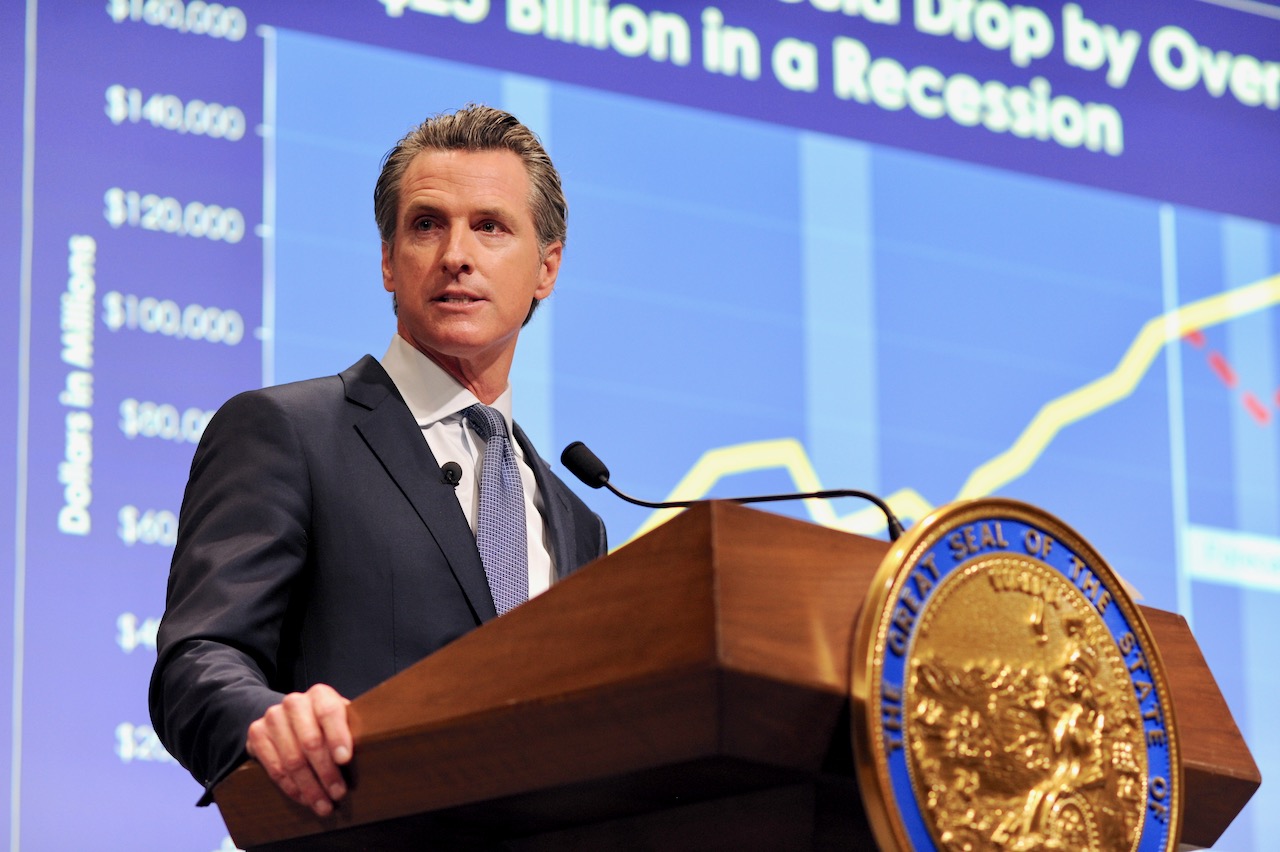
Solar electricity production. (Photo: energy.ca.gov)
Ringside: Is Photovoltaic Power Competitive?
Just like irrigated crops, it’s seasonal output, and prices fluctuate – solar farmers should plant accordingly
By Edward Ring, December 13, 2024 2:55 am
 As reported in Politico on 10/29, “Westlands Water District, which supplies some of California’s driest farmland in the Central Valley, is making plans to convert some 200 square miles of it — an area roughly the size of Detroit — into what would be the largest solar installation in the world.”
As reported in Politico on 10/29, “Westlands Water District, which supplies some of California’s driest farmland in the Central Valley, is making plans to convert some 200 square miles of it — an area roughly the size of Detroit — into what would be the largest solar installation in the world.”
The motivation for this is understandable enough. If we can’t grow crops, let’s grow electrons.
It’s necessary to note that several assumptions underlying that motivation are debatable. The answer to what Politico’s writers characterized as “finicky water supplies” is to build more water supply infrastructure and reform delta management. It’s also incumbent on proponents of massive photovoltaic installs to evaluate the heat island impact of 200 square miles of absorbent black panels. We must also mention the biggest elephant in the room, the fact that even with battery storage so photovoltaic panels can supply continuous electricity day and night, there are massive seasonal fluctuations. In 2023, California’s utility scale photovoltaics generated 4,456 gigawatt-hours in June, but only 1,832 in December. If California goes even bigger on photovoltaics, good luck selling your power in June.
But setting these and other questions aside, what would be the economic impact of such a massive undertaking?
We can start by estimating how much power would be generated, which is probably the least complex variable to estimate. Photovoltaic panels covering an area of 200 square miles would produce about 200,000 gigawatt-hours per year. That’s based on assuming an output of 15.5 watts per square foot in full sun and 6.5 full sun equivalent hours per day, which equates to an average yield of 27 percent. According to the California Energy Commission, the state’s current base of utility scale photovoltaics delivered an average yield of 23 percent in 2023, so these assumptions are in the ballpark, and are only optimistic if we assume panel efficiency will not improve.
As for the cost of the installed system, not including the cost of the land, which the crop farmers turned solar farmers will presumably already own, and assuming a cold war with China doesn’t dry up the supply of panels, a low but credible cost estimate is $1.00 per watt. While the price of photovoltaic panels may continue to drop, the total system cost has to take into account not just the panels, but the mounting structures and other electrical components, the labor costs, and the costs to develop, design, permit, and manage the project.
Under these assumptions, 200 square miles of photovoltaics will cost $84 billion to install, and even based on the wholesale price for electricity in California today, which is only $0.05 per kilowatt-hour, 200,000 gigawatt-hours will generate $10 billion per year in revenue.
Depending on the financing, this can be a decent return on investment, but a lot of things have to go right. Perhaps that’s why photovoltaic installations are heavily subsidized. Investors can get at least a 30 percent tax credit on the system cost, as well as the ability to claim accelerated depreciation deductions. This can make the investment attractive for potential corporate partners that want to offset earnings. System operators may also be able to claim Renewable Energy Credits based on how much electricity they deliver each year.
Something that must accompany massive solar investment are massive systems to store the electricity. If 50 percent of the daily output from these panels will have to be stored to be discharged onto the grid during hours of peak demand after the sun has set, at a cost of $150,000 per megawatt-hour of storage, the battery farms will cost another $41 billion.
In this fully built out scenario, adding the cost for battery farms to the cost for 200 square miles of photovoltaic panels results in a total cost of $125 billion. If this amount is financed via a construction loan with a 25 year term and a 5 percent interest rate, the annual loan payments will be $8.9 billion. On the upside, having the batteries would enable the project to deliver constant baseload power, which could attract a wholesale price well above $.05 per kilowatt-hour.
The fact that electricity in California retails at an average price of $0.32 per kilowatt-hour when the wholesale rate averages around $0.05 per kilowatt-hour should make painfully clear how much more has to happen between the moment the electrons are generated and the moment when someone plugs an appliance into one of their wall sockets. The cost to maintain and upgrade California’s far flung power transmission and distribution infrastructure accounts for a big part of that, as does, let’s not forget, the cost to integrate renewables onto the grid.
Developers of massive solar installations probably don’t have to worry about federal subsidies drying up. GOP congressmen in Texas and Louisiana, the biggest recipients of Biden’s infrastructure funding, aren’t about to vote in favor of letting the Trump administration cancel them, and the razor thin GOP majority will not overcome a few dissenting votes. But developers face plenty of other challenges.
Californians consumed 281,000 gigawatt-hours in 2023. The 2045 goal set by the California Air Resources Board is 500,000 gigawatt-hours per year. Will Californians adopt EVs and convert to all electric appliances fast enough to soak up a rapid increase in supply? Will California’s 94,000 gigawatt-hours per year of natural gas generated electricity go offline — a supply reduction that would have to be made up for — especially in winter when solar production is half that of summer? Will development of renewable electricity elsewhere in California, or imported from other states, combine to create an electricity glut, driving the wholesale price down? What is the plan, and the cost impact, looming over all photovoltaic installations that will eventually degrade and have to be removed? And if the price/performance improves enough, why wouldn’t individuals use private rooftop PV systems and their EV batteries to decentralize the grid and collapse the market for utility scale solar?
Here’s a takeaway metric. A one square mile photovoltaic farm will generate about 1,000 gigawatt-hours per year. But just like irrigated crops, it’s seasonal output, and prices fluctuate. Solar farmers should plant accordingly.
- Ringside: Saving California’s Rural Water Users - May 8, 2025
- Ringside: How to Add 10 Million Acre Feet Per Year to California’s Water Supply - April 30, 2025
- Ringside: Can EVs Make Up for Gasoline Shortages? - April 23, 2025








Taking away farmers water is all about converting land to non-food uses. Solar farms are a total scam designed to enrich the elites while driving power costs to unaffordable levels for ordinary people. Promoting solar is in essence, declaring war on American citizens.
The cost will be much more than stated.. The solar panels have a useful life of around 20 yrs., The storage batteries somewhat less than the 20 yrs for the panels. A typical power plant can generate electricity for at least 60 yrs. only requiring routine annual mantainance. So realistically, the solar panels and battery storage will need to be replaced in its entirety every 20 yrs. or so… So $125 billion times 3, plus the rate of inflation, and the cost materials and labor over a 60 year period would be astronomical. Currently, Our per kWh cost from P G & E (Pacific Graft and Extortion is; .49 cents a kWh for peak, .48 cents for off peak. We have paid as high as .61 cents per kWh for peak, and .59 cents per kph for off peak.. It’s absolutely ridiculous.. P G &E could give a rats ass because they’re going to make money no matter what.. The bottom line we are wasting billions of dollars on something that will eventually fail to provide what a modern thriving civilization requires, and that is cheap, reliable and affordable energy…
Remind me again why we need giant solar farms, battery storage plants, and wind farms when we can produce plenty of reliable and affordable electricity with nuclear and natural gas power plants? What, you think we have to stop using natural gas because it is causing drastic climate change? Are you stupid?
Probably most Californians would rather have the land used for productive crops that would provide much needed nourishment instead of these photovoltaic farms that are a blight upon the land and especially when other sources of energy can be produced more efficiently and cheaply? No doubt the criminal Democrat mafia that controls this state and their cronies would rather have solar and wind panels imported from communist China because they get payoffs to do so?